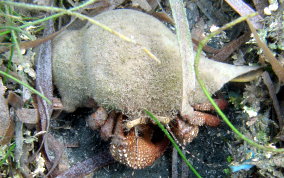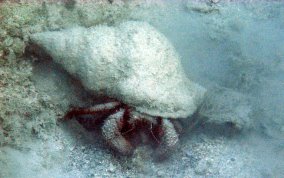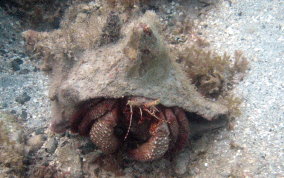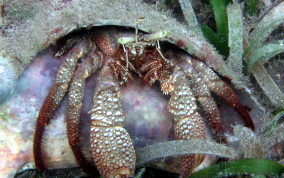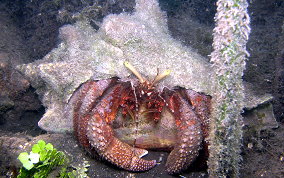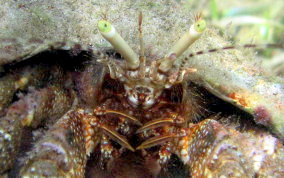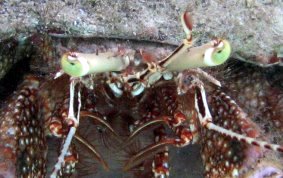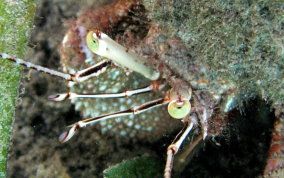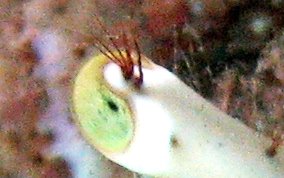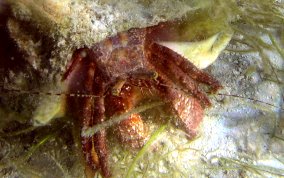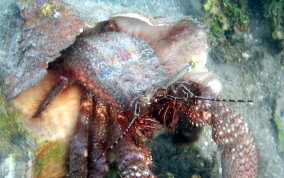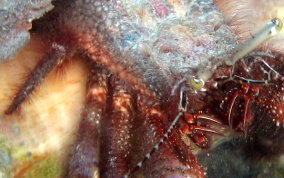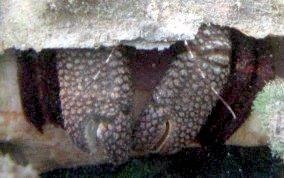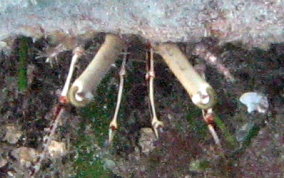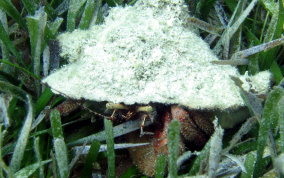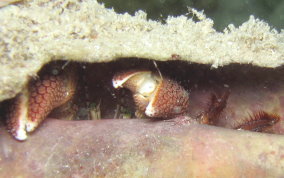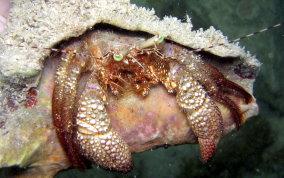Giant Hermit Crab
Petrochirus diogenesNamed because it it the largest Caribbean hermit crab. They occupy the discarded shells of large mollusks like the Queen Conch and the tulip snails.. Please don't remove mollusk shells, they provide much needed homes for creatures like these who spend their time filtering through the sea bottom sand and mud for organic material to eat. If you ever notice a cloud of dust being raised, you can bet there is a hermit crab, Southern Stingray or Nurse Shark stirring up the bottom looking for food. They have claws of just about equal size, long, yellow eyestalks with eyes of green or blue. They have long eyelashes. (I'm sure that is not the technical term for them). They inhabit both sea grass beds, sandy bottoms near reefs and rocky shorelines and the muddy bottoms in the mangrove areas. They search for food in depths from as shallow as 3 feet to depths of almost 100 feet or more. From juveniles they continually look for larger shells to fit their growing bodies.
